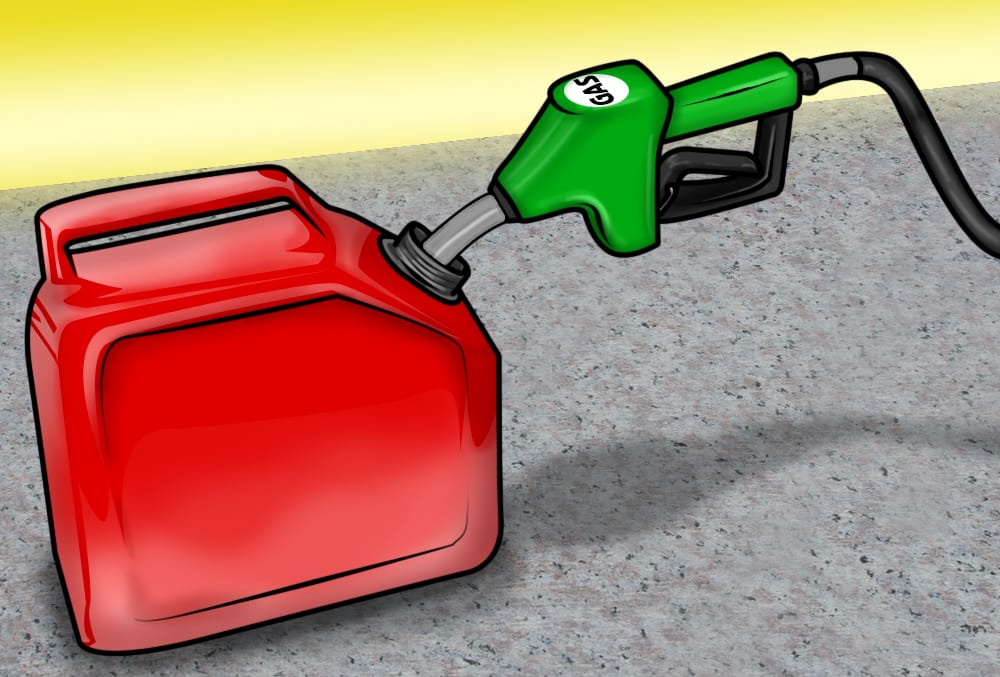Facilities of various sizes store and use petroleum-based gasoline. It can be used to power a portable generator or keep lawnmowers, forklifts, and other heavy machinery running. No matter the use, fuel is an essential component of many industries.
Gasoline Storage 101
However, many companies mistakenly store and transport fuel in the wrong containers. This exposes the facility to legal action and fines while creating an unsafe working environment. So how can you store fuel or combustible liquids at work? Continue reading this article to find out more.
Understanding a DOT Approved Gasoline Container
OSHA Standards require that gasoline be stored in a container approved by the DOT in amounts fewer than 5 gallons. This is fuel can have protective options to reduce the chance of mishap. Usually, these containers come with a:
- Spout coverage.
- Flash-arresting screen
- Spring-closing lid
The design mentioned above prevents oil particles from coming in contact with fire sources. These design elements also reduce pressure inside the can in case it is exposed to fire. The closed can is also required for safe transportation. These cans also come with two important features:
- The rugged handle acts as a roll bar and protects the trigger mechanism and spout from damage.
- To prevent excessive oil spills while transportation, a filling cap is fitted with brackets held down.
Note that only an authoritative body, such as Underwriters Laboratory, can give provide approval for DOT. Following the DOT guidelines would mean fewer chances of a mishap when fuel cans are placed in your truck’s backseat.
Why DOT Approval is Unique
OSHA has stated that commercial businesses must use FM-Approved safety cans and/or UL Listed safety containers. These containers can be made of metal or polyethene.
They must be equipped with flame arresters, pressure relief, self-closing lids, and 100% leak testing. Safety cans come in many sizes, colours, capacities, and materials. You can even choose between two types:
- Type I Safety Cans: They have only one opening. This means that you can fill & pour from one spout only.
- Type II Safety Cans: There are two openings: one for pouring and one for filling. The fill opening acts as a vent during pouring.
Additionally, containers can be colour-coded to help identify fluid contents. Red Yellow for gasoline for diesel; green for combustibles, and blue for kerosene
All the cans can hold gasoline or other flammable liquids. So, how do you choose a suitable vessel? Two things are necessary for regulatory container compliance:
- Where is the fuel being used, and who is using it?: For example, whether someone is at work or home.
- Application of the fuel: For example, storing of liquid flammable versus their transportation.
However, workers who transport fuel to and from work sites will need a particular type of container because fuel cans are subject to greater risk of spillage, damage, and accidents when they are being moved. It would help if you used a DOT-approved gas safety can in this case.
Gas Storing Tips For Workplace
Here are some safety tips for businesses that store, transport, or dispense fuel:
- Do not spill gasoline.
- Always secure safety cans during vehicle transportation.
- Ensure that the nozzle is in direct contact with the can when filling.
- Keep fuel clear of heat sources, fire, and spark-generating devices.
- Keep containers away from traffic, customers, and other vehicles.
- Only use approved containers that have a tight-fitting locking cap or a spring closing lid.
- It would help if you did not place containers in vehicles (truck beds, trunks, pickup trucks) or on any other surface than the ground.
- Keep gasoline in a fireproof storage cabinet whenever possible.
- In case of a fire, place extinguishers near containers.
Final Word
Storing gasoline safely inside a facility is a sensitive affair. Oil spills can happen anywhere in an oil-water separator or on the floor; these spills shouldn’t be taken lightly. Make sure you keep the above tips in mind to ensure the facility’s safety. You can also use oil removal wipes for small oil spills in the facility.
